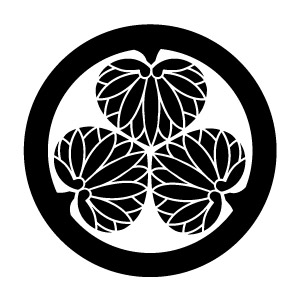Oshi clan (1/2)A transportation hub close to Edo

Matsudaira family crest “three hollyhocks in a circle”
- Article category
- History of the domain
- domain name
- Oshi clan (1590-1871)
- Affiliation
- Saitama
- Related castles

Oshijo
- related castles
Oshihan was a post town on the backroads of the Nakasendo road, and was also a transportation route using water transport from the nearby Tone River. Because it was close to Edo, the shogunate attached great importance to it, and the feudal lords and feudal lords continued to be the lords until the end of the Edo period. Let's unravel the history of the Oshi clan.
The era of Matsudaira Ietada and Matsudaira Nobutsuna
The Oshi clan was built on Oshi Castle, which was devastated by Ishida Mitsunari's water attack, and its two castle towns.
The first lord of the domain was Ieyasu's fourth son Matsudaira Tadayoshi, but since he was only 11 years old at the time, he was placed in the care of his vassal Matsudaira Ietada instead. By the way, Tadayoshi Matsudaira was also the younger brother of the second shogun Tokugawa Hidetada. Tadayoshi Matsudaira became an adult and became the founder of the Owari Tokugawa domain, but he died at the young age of 27.
Matsudaira Ietada rebuilds the ruined Oshi Castle and castle town, and with the help of the magistrate Tadatsugu Ina conducts land surveys within his territory. Afterwards, Matsudaira Ietada was transferred to Shimousa Province (Kamidai 10,000 koku), and Matsudaira Tadayoshi entered the Oshi domain, but since he was still young, the chief retainer, Yoshitsugu Ogasawara, handled the political affairs.
He improved the appearance of the domain by separating soldiers and farmers, organizing vassals, developing new rice fields, and carrying out flood control work on the Tone River, but when Tadayoshi Matsudaira was transferred to Owari, the Oshi domain was temporarily abolished. It will be under the direct control of the Shogunate. Furthermore, Matsudaira Ietada was killed in the Battle of Fushimi Castle before the Battle of Sekigahara.
Later, in 1633, Matsudaira Nobutsuna, who was also a page of Tokugawa Iemitsu and highly trusted by Hidetada, became the lord of the domain with 30,000 koku, but he soon received recognition for his efforts in suppressing the Shimabara Rebellion. In 1639, it was transferred to the Musashi-Kawagoe domain, which had 60,000 koku.
Abe family era
After Matsudaira Nobutsuna was transferred, Abe Tadaaki was placed in charge of the Oshi clan. He was an important figure in the shogunate who served as roju for two generations, the third shogun, Iemitsu Tokugawa, and his successor, Ietsuna Tokugawa. It is said that he and Matsudaira Nobutsuna supported the shogunate by compensating for each other's shortcomings, erasing the spirit of the Sengoku period from the Tokugawa vassals and solidifying the foundations of the Tokugawa government.
He was also a man of character who adopted and raised many children without relatives. The Abe family has been feudal lords for nine generations since Abe Tadaaki, and the amount of koku has increased from 50,000 koku to 100,000 koku.
- related castles

- WriterAYAME(Writer)I am a writer who loves history, focusing on the Edo period. My hobbies are visiting historical sites, temples and shrines, and reading historical novels. If there is a place you are interested in, you can fly anywhere. I'm secretly happy that the number of sword exhibitions has increased recently thanks to the success of Touken Ranbu.



